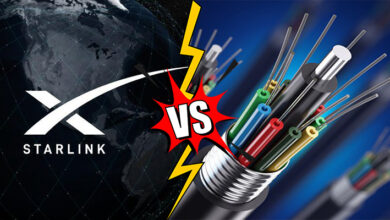Top 10 Best Automatic Cars In India 2022
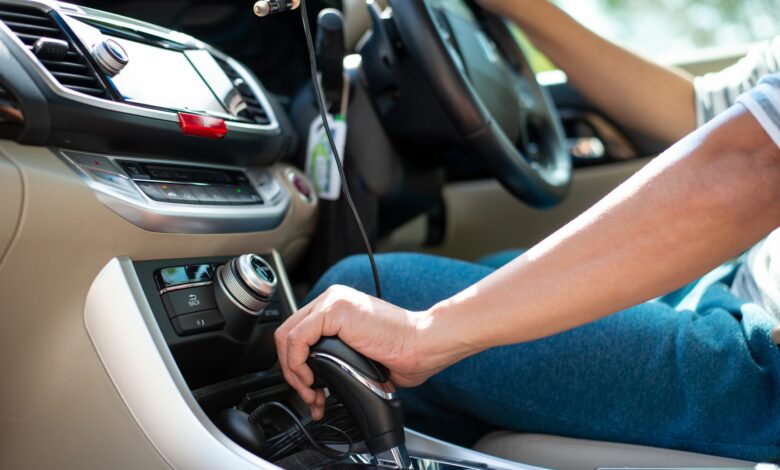
Top 10 Best Automatic Cars In India 2022
A car with automatic transmissions is the most popular vehicle in the market. One should first select which transmission is best for you before purchasing a car.
You must learn knowledge regarding automatic and manual transmissions to achieve this. Although gearbox types are not as distinct as they once were, understanding the differences and how each transmission operates is helpful when choosing an automobile.
What is an Automatic Car?
An automated car, according to State Farm, has an automatic transmission and does not need the driver to physically shift gears. Transmissions help to direct the rotating power and speed of a car. And automatic transmissions change gear ratios in real-time as the car moves—sensors in an automatic transmission use internal oil pressure to shift gears at the appropriate times. The torque converter swaps gears when the transmission is briefly disconnected from the engine.
By looking at the pedals, you can tell if a car is automatic or not. If there are two pedals, it is automated. A clutch pedal, slightly smaller than the brake pedal, is included in manual automobiles.
Types of Automatic Transmission in Automobiles
According to a report from Japan, modern automobiles now come with a variety of automatic transmissions. Here are some examples of automatic transmissions:
- Torque converter automatic: This is the most common type of automatic transmission in automobiles. The torque converter automatic gearbox can take control of the car thanks to a hydraulic fluid or torque converter connected to the engine’s electronic control unit.
- Continuously variable transmission (CVT): A CVT allows a car to accelerate without changing gears since it has an “infinite” number of gear ratios. CVTs use variable-width pulleys and a belt instead of fixed gears.
- Semi-automatic transmission (SAT): A semi-automatic transmission, like a manual transmission, uses sensors, pneumatics, processors, and actuators to move the clutch.
- Dual-clutch transmission: A dual-clutch transmission, called direct-shift gearbox, is a type of automatic transmission that works as a manual transmission. A dual-clutch transmission is controlled by the car’s computer and has two clutches instead of one. One clutch controls the odd gears, while the second clutch controls the even gears.
- Tiptronic transmission: These automatic transmissions allow the driver to shift out of automatic mode to gain more command over the car’s performance, relying on the driver to alter ratios while the engine operates normally. Porsche invented Tiptronic transmissions.
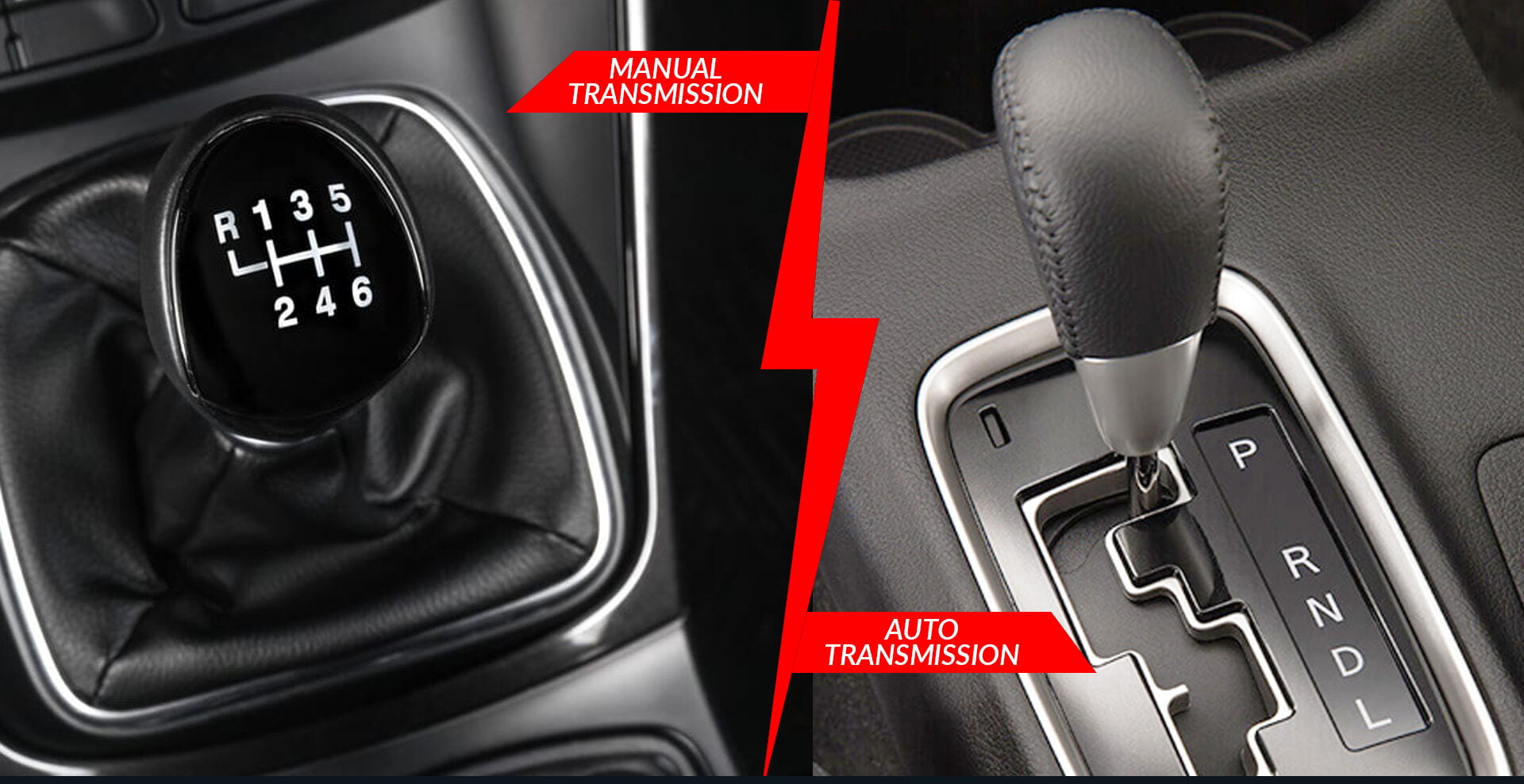
Automatic Transmission’s History
The Sturtevant brothers of Boston attempted the first automatic transmission in 1904, according to Auto Repair San Antonio, till then manual transmissions were the only option for drivers. Weights and bands controlled their two-speed “horseless carriage” transmission.
The use of a planetary transmission in the car’s gearbox was an advance that aided inventors in the development of an automated transmission. Weights would regularly fly apart, causing the transmission to fail, and the automated transmission they designed was notoriously difficult.
The use of a planetary transmission in a vehicle’s gearbox was an advance that aided inventors in the development of an automated transmission. The Wilson-Pilcher was the world’s first planetary transmission. Two epicyclic gear trains were employed in the transmission between 1900 and 1907, allowing four forward gears to be selectable by changing a single gear change lever.
Alfred Horner Munro, a Canadian steam engineer, invented the first automatic transmission in 1921, which he patented in 1923. He created the automatic transmission with four forward speeds and no reverse or parking gears, and he used air pressure. Oldsmobile, Buick, and Cadillac used the transmission between 1937 and 1938.
Fernando Lehly Lemos and José Braz Araripe, two Brazilian engineers, invented the first hydraulic transmission in 1932. General Motors bought the prototype and turned it into the Hydra-Matic transmission. This was mass-produced in 1940, and it irrevocably altered the course of the industry. Throughout WWII, General Motors used the revolutionary automatic hydraulic gearbox in tanks and other military vehicles.
In 1948, Buick was the first manufacturer to provide a hydraulic transmission with a torque converter. This transmission was given the name Dynaflow.
When Was the Semi-automatic Transmission Developed?
According to Autoindustriya.com, REO and General Motors started producing semi-automatic transmissions in 1934, which were easier to operate than fully manual transmissions. Their transmission designs continued to have a clutch that coupled the engine with the transmission for drivers to use.
Advantages of an automatic car
Each transmission, according to Budget Direct, has its own set of benefits, and drivers’ preferences may vary. Here are some of the benefits of driving an automated vehicle:
- It’s easier to utilise in congested areas. Starting and speeding up in a manual car takes more effort; starting and stopping a vehicle can be laborious in heavy traffic.
- The transmission shifts fast and smoothly, making it simple to start and stop automatic autos. In an automatic car, drivers don’t have to do more work to shift the transmission because it does it for them.
- Learning to drive in an automatic car is easier as the driver and passengers can’t feel when the transmission shifts. An automatic car requires less practice than a manual car. A manual car involves the use of more limbs to operate. Furthermore, learning to drive an automatic takes less time.
- The likelihood of stalling is reduced. By accident, a driver can stall a manual vehicle at a stoplight. Automatic cars slow less unless they have a technical problem
- They are better in mountainous areas.
Disadvantages to owning an automated vehicle:
- Purchasing them can be more expensive. Automatic cars can cost up to $4,000 more than their manual counterparts. However, this depends on the brand and model of the car. Furthermore, some cars are only available in automatic transmission.
- It may impede a driver’s ability to focus. Because the driver must move the gears manually, driving a manual car demands more concentration. Driving an automatic car requires less attention. This means that a driver may choose to engage in distracting activities, resulting in accidents and lower fuel economy. The fuel efficiency of manual vehicles usually is better than that of automatic cars, but this depends on the brand and type of the vehicle.
Automatic vehicles will only grow more in popularity. The key to selecting the best one for you is to be well-informed.
Indian Auto Industry Expects Smooth Ride in 2022, Despite Concerns Over Omicron
During the following year, The Indian vehicle industry expects strong demand to continue, alleviating concerns about semiconductor supply.
However, roadblocks like the third Covid wave, prompted by the development of the Omicron variety in India and rising commodity prices, may slow the industry’s recovery.
“The auto sector is hoping that the Omicron will not be a big stumbling block. “We are optimistic that, after the semiconductor crisis has passed, the industry will continue to see robust demand and perform well in 2022,” said Rajesh Menon, Director General of the Society of Indian Automobile Manufacturers (SIAM).
“This sector is hoping that the Omicron will not be a big stumbling block. “We are optimistic that, after the semiconductor crisis has passed, the industry will continue to see robust demand and perform well in 2022,” said Rajesh Menon, Director General of the Society of Indian Automobile Manufacturers (SIAM).
“The industry is hopeful that the government’s favourable policies, like the PLI schemes for auto component sectors, the advanced chemistry cell, the extension of the FAME-II scheme until 2024, and the announcement of a PLI scheme worth Rs 76,000 crore for semiconductor manufacturing, will give the industry the needed boost.”
Automobile prices have recently risen due to growing commodity costs. Similarly, the semiconductor shortage has resulted in a longer wait time and higher prices.
Semiconductors are now used extensively in the manufacture of internal combustion engines. They’re found in a range of sensors and controls in any car.
“We regard 2022 as a neutral year, as the ascent of Omicron has reawakened world dread,” says the author “, President of the Federation of Automobile Dealers Associations (FADA), Vinkesh Gulati, stated.
“If chip-making countries go into lockdown or prioritise chip-making for ‘work-from-home’ devices, this might have a bigger impact on passenger vehicle supply.”
Furthermore, Gulati stated that if the third wave materialises, the two-wheeler sector, also experiencing demand headwinds, could further deteriorate.
“We expect supply and demand to return to normalcy in the second half of CY 2022.” As stated, the auto industry may only fully recover by 2023 and return to pre-covid levels if covid is eliminated.”
The industry is presently concerned about the third Covid-19 wave generated by the Omicron version.
“Overall, the industry is predicted to do better than in FY21, as we will most likely witness uninterrupted production throughout the year if Omicron is not too severe and there are no localised lockdowns,” says the report “, Crisil Research Director Hemal Thakkar stated.
“Semiconductor shortages are also easing compared to last years, but they will persist through 2022.”
Thakkar also stated that the EV momentum would be “improved.” “Players are interested in investing in battery cells and vehicles due to the Centre’s PLI, which will allow ecosystem expansion and demand-side incentives under ‘FAME II’ and state policies.
“Normalcy in the supply chain is expected to be achieved only over the next 12-18 months as additional capacity come on line,” Shamsher Dewan, Vice President & Group Head, ICRA, stated of the semiconductor problem.”
“Leading global stakeholders across the value chain have forecasted that production gaps will persist for the most of 2022, with supply only likely to return to normal by the first quarter of CY2023.”
Dewan also stated that automakers would continue to develop new products, focusing on emerging technologies like electric vehicles (EVs).
“With India’s EV regulatory climate turning favourable for the 2W category, the segment is projected to be at the forefront of the country’s automobile electrification effort.”
“Significant financial incentives are being granted for e2Ws under the centre’s FAME-II scheme and select state EV policies; the same has changed the total cost of ownership (TCO) in favour of EVs and has contributed to a rise in demand for the segment in recent months.”
According to Tanu Sharma, Director Ratings at Brickwork Ratings, BWR’s revenue growth predictions for passenger vehicles for 2022 may be reduced downwards to 15% due to more severe semiconductor chip shortages affecting deliveries and subdued holiday season sales.
The Top 10 Automatic Cars in India in 2022 are listed below.
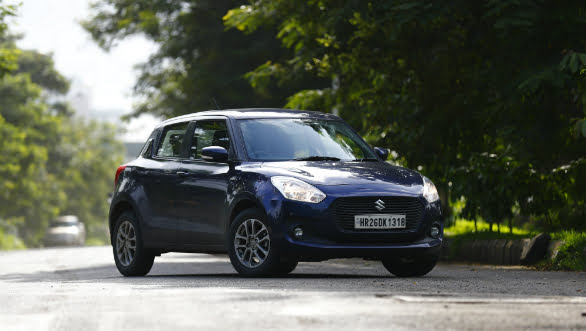
1. Maruti Suzuki Swift AMT
The Maruti Suzuki Swift is a terrific offering from India’s top automaker, and it has so much capability that it may often amaze you. The sporty hatchback is a joy to drive with a sophisticated AMT (Automated Manual Transmission) transmission that perfectly compliments the Swift’s character.
Maruti Suzuki Swift AMT features:
- 4.2-inch coloured driver’s display
- Cruise control
- 7-inch touchscreen infotainment system
- Auto AC
- Reverse Parking Sensors with camera
- Keyless Entry
The Maruti Suzuki Swift is now in its third generation. It features a BS6 compliant 1.2-litre Dual Jet petrol engine that delivers 90 PS of maximum power and 113 Nm of peak torque and an idle start-stop feature for better fuel efficiency. It comes with a refined 5-speed AMT gearbox that shifts smoothly. The Swift AMT is an economical automatic car to operate, with a fuel economy of 23.76 kmpl. The Maruti Suzuki Swift, which is priced between Rs. 5.73 and Rs. 8.41 lakhs (ex-showroom, Delhi) are stiff competitors for all automatic hatchbacks.
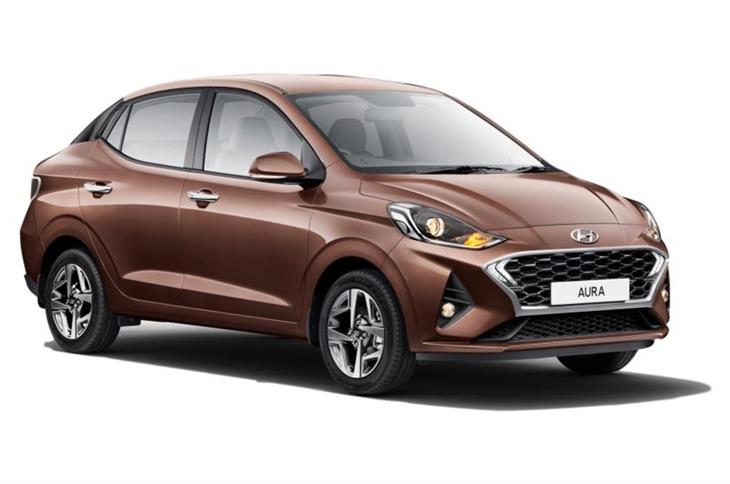
2. Hyundai Aura AMT
The Hyundai Aura is a tiny sedan with a strong personality. It is futuristic, modern, and capable of providing a good ride quality and road presence as a whole. The Aura’s already good value package becomes much better with competent AMT performance.
Hyundai Aura AMT Features:
- Segment leading 8-inch touch screen infotainment.
- Cruise Control
- Steering Controls
- Wireless charging
- Cooled glove box
- Keyless entry
- Push-button start
- Electronically adjustable OVRMs
The Hyundai Aura AMT is powered by two BS6-compliant engines: the tried-and-true 1.2-litre petrol (83PS/114Nm) and 1.2-litre diesel (75PS/190Nm). With pricing ranging from Rs. 5.99 to Rs. 9.36 lakhs, driving the Hyundai Aura AMT is not only convenient but also cost-effective since the petrol automatic delivers a fantastic mileage of 20.1 kmpl and the diesel automatic returns a mileage of 25.4 kmpl.
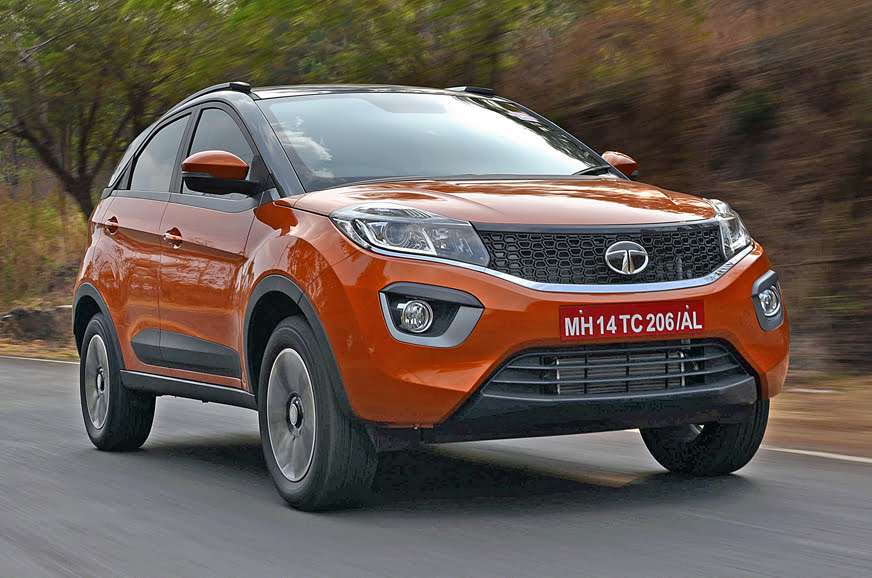
3. Tata Nexon AMT
The Tata Nexon AMT is the first choice if you want an automatic compact SUV that can handle both cities and highways, thanks to Impact Design’s clean appearance and Tata’s futuristic line of diesel units. The Nexon is smart, attractive, powerful, and fun to drive.
Tata Nexon AMT Features:
- 7-inch Floating touch infotainment
- Cruise Control
- Automatic AC
- Rear AC Vents
- iRA Connected Car Tech
- Voice Control
When it comes to performance, the Tata Nexon is a capable compact SUV with options for 1.2-litre turbo-petrol and 1.5-litre turbo-diesel engines. Both engines are BS6 compliant and come with a 6-speed AMT transmission. The petrol engine has a maximum power output of 120 PS and a peak torque output of 170 Nm, while the diesel engine has a maximum power output of 110 PS and a peak torque output of 260 Nm.
The diesel Nexon AMT can get up to 21.5 kmpl, while the petrol Nexon AMT can get up to 17 kmpl. One of India’s most popular small SUVs, with showroom pricing ranging from Rs. 7.19 to 12.95 lakhs (ex-showroom).
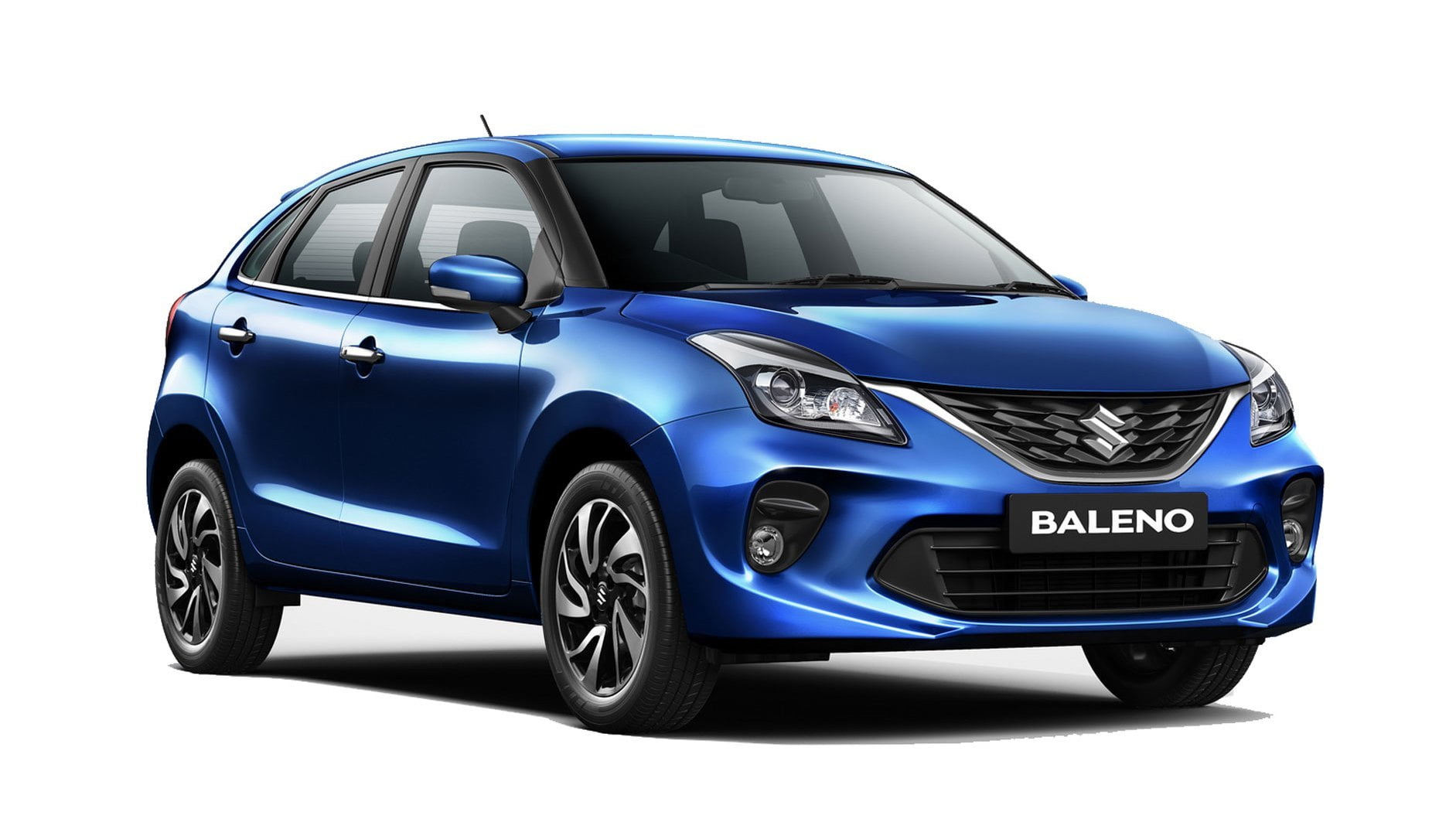
4. Maruti Suzuki Baleno CVT
The Maruti Suzuki Baleno CVT is a stylish automatic hatchback with impressive aesthetics, amenities, and fuel economy. The interiors of the Baleno impress fans and reviewers alike, while the outside of the Baleno is attractive and athletic.
Maruti Suzuki Baleno CVT Features:
- 7-inch touchscreen infotainment system
- Auto climate control
- Push-button stop/start
- Keyless entry
- Semi Digital Instrument Cluster
The Maruti Suzuki Baleno CVT is equipped with a 1.2-litre naturally aspirated petrol engine that generates 83PS and 113 Nm of torque and is connected to a 5-speed CVT transmission. In terms of mileage, the Baleno CVT returns 19.56 kmpl thanks to its capable and fun to drive CVT. The Maruti Suzuki Baleno CVT is a decent automobile for automatic cars in India, with Rs. 5.98 – 9.30 lakhs (ex-showroom).
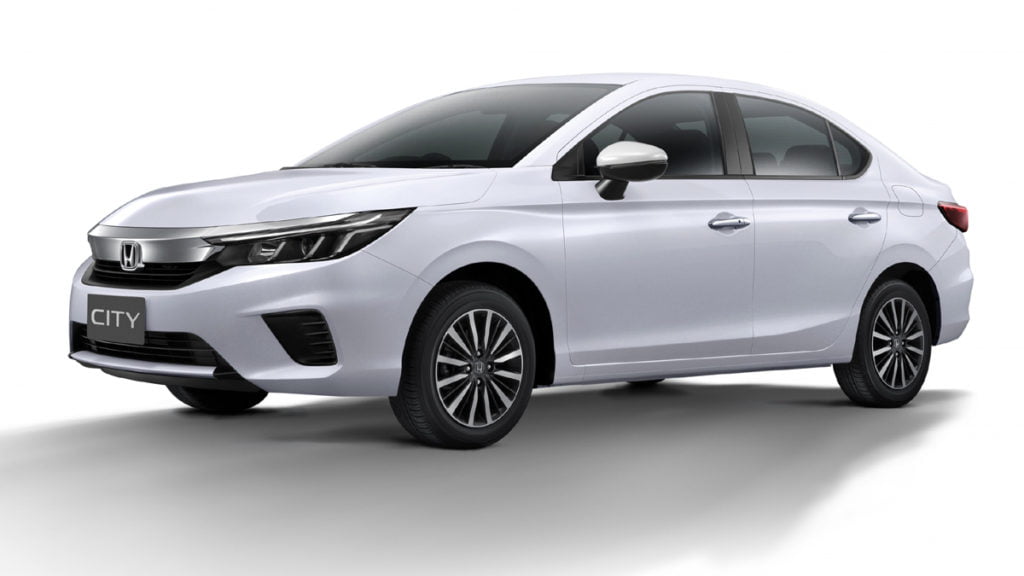
5. Honda City CVT
It has managed to make a name for itself; it is without a doubt the Honda City, the C-Segment Queen. Since 1998, Honda’s premium sedan has consistently topped the sales rankings. The latest Honda City is a winner in every way, whether for its bold style, first-rate features, or outstanding high-speed performance.
Honda City CVT Features:
- 8-inch touchscreen infotainment system
- Ambient lighting
- Paddle shifters
- Cruise control
A 1.5-litre i-VTEC petrol engine with 121 PS of maximum power and 145 Nm of peak torque powers the current Honda City, coupled to a competent 7-speed CVT automatic transmission. This engine is convenient and efficient, with a fuel economy of 18.4 km/l. The City’s outstanding and groundbreaking iVTEC engine fits flawlessly with the 7-speed CVT’s refined performance, providing a rewarding driving experience. The Honda City CVT, which costs between Rs. 10.99 and Rs. 14.94 lakhs (ex-showroom) is brilliant in every way.
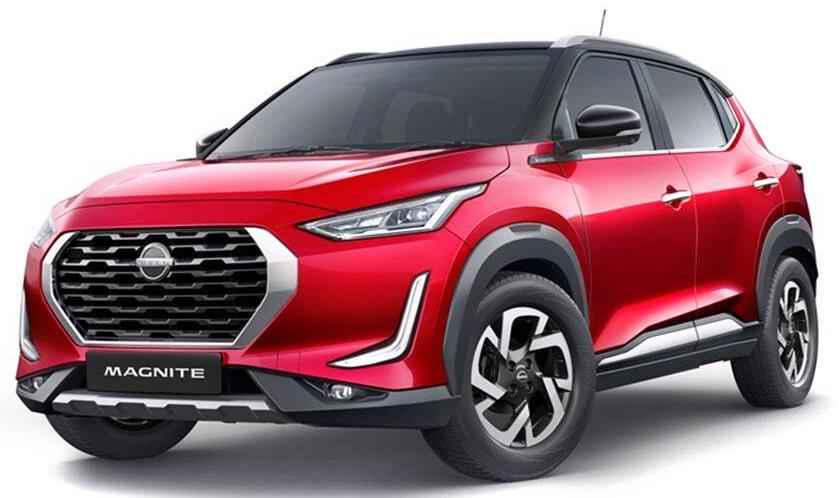
6. Nissan Magnite CVT
The Nissan Magnite CVT is a competent compact SUV with hatchback pricing. Just because the Magnite CVT is less expensive doesn’t mean it lacks stylish features, appearance, or comfort.
Nissan Magnite CVT Features:
- 8-inch touchscreen infotainment system
- 16-inch dual-tone alloy wheels
- Automatic Climate Control
- Rear AC Vents
- All-Digital Instrument Cluster
- High-End JBL Speakers
- Puddle Lamp Feature
The Magnite’s CVT magic comes from a snappy 1.0-litre turbo-petrol engine with 100 PS and 152 NM of torque, linked to a powerful, convenient, and smooth 5-speed CVT automatic transmission. It also excels in mileage, with up to 18 kmpl possible. The Nissan Magnite CVT, which is priced between Rs. 5.59 and Rs. 10.00 lakhs (ex-showroom), is a newcomer that impresses in many areas, with its petrol-powered CVT drive being one of them.
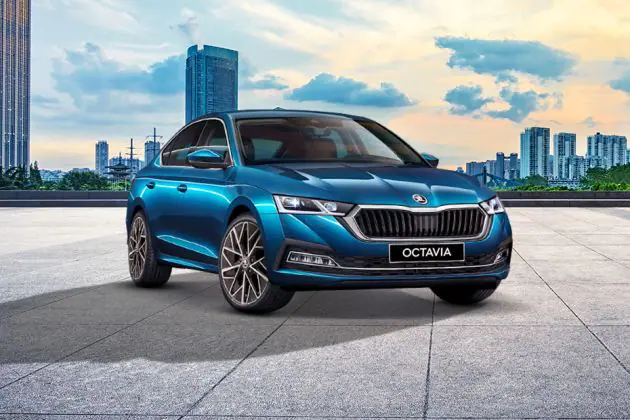
7. Skoda Octavia
The Skoda Octavia is one of the greatest sedans to choose from for comfort and performance.
Skoda Octavia DSG Features:
- 10-inch touchscreen infotainment system
- Dual-zone climate control
- Electronically powered tailgate
- All-Digital Instrument Cluster
- Canton Premium Sound System
- Cruise Control
- Tyre pressure monitoring system
The Octavia is equipped with a better 2.0-litre turbo-petrol engine that delivers 190PS of pure power and 320 Nm of torque and a 7-speed DSG (dual-clutch automatic) transmission that compliments also enhances Octavia’s performance. The fact that the Octavia is only available with the DSG transmission attests to Octavia’s snappy automatic performance and up to 16 kmpl fuel economy. The Octavia DSG is a severe business car, costing between 25.99 and 28.99 lakhs (ex-showroom).
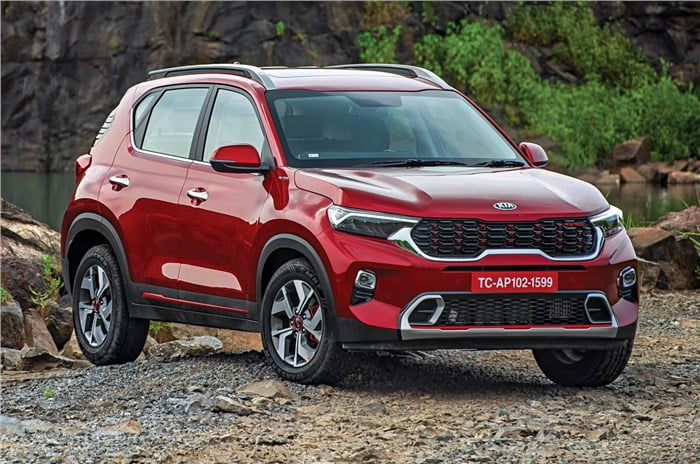
8. Kia Sonet
Starting with the Seltos and then the Carnival, Kia’s journey in the Indian vehicle market has been pretty remarkable. Kia Motors’ third vehicle, the Sonet, was introduced to further the company’s roots.
Kia Sonet Features:
- LED Lights
- KIA’s Signature UVO Connected Car Tech
- 10.25 inch touch navigation system
- 4.2 inch digital MID
- Front Ventilated Seats
- Air Purifier with Virus Shield
- Multi Drive and Traction Mode
- Remote Engine Start
- Bose 7 Speaker Premium Sound System
The Kia Sonet is powered by a 1.0-litre turbo-petrol engine that produces 120PS and 172 Nm of torque and is paired to a 7-speed DCT transmission that offers the Sonet DCT incredible driving dynamics and a performance-oriented bent. The Kia Sonet DCT, priced between Rs 6.79 and Rs 13.35 lakhs (ex-showroom), excels in every category, including mileage of up to 18.3 kmpl.
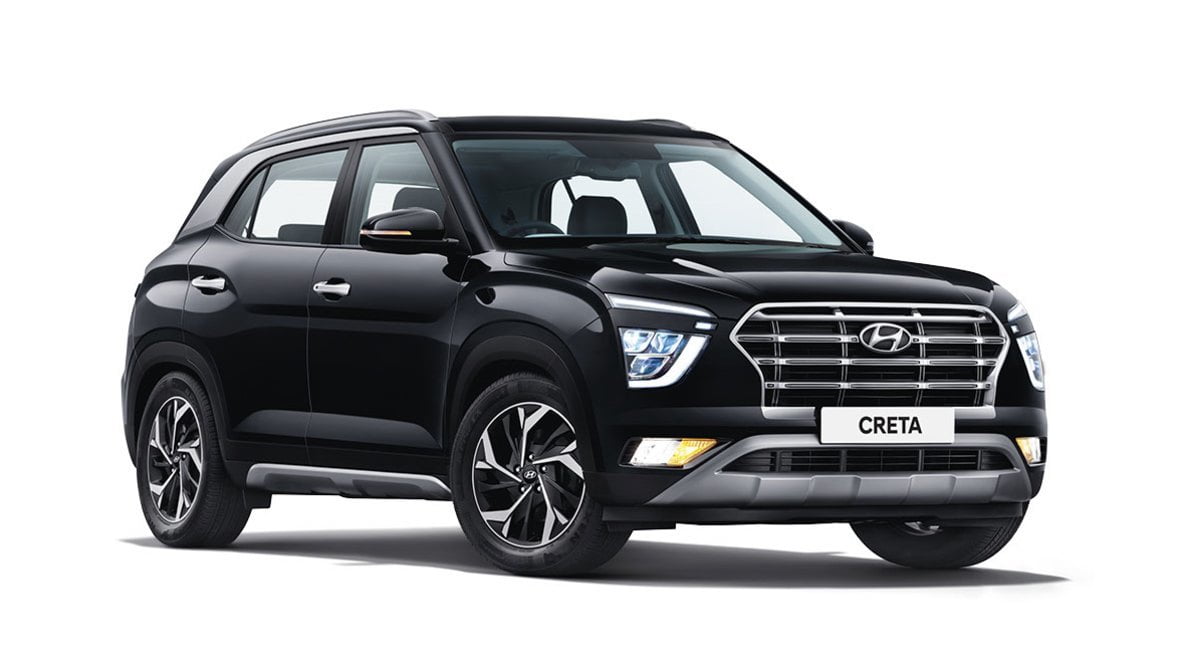
9. Hyundai Creta
The Hyundai Creta is a segment leader with the ideal appearance, functionality, and features. The Creta has been mechanically well-equipped, even for the automatic Creta models.
Hyundai Creta Features:
- 10-inch infotainment system with e-Sim connectivity
- Front Row Ventilated Seats
- Leather Wrapped Steering with Electronic Controls
- Voice-Enabled Panoramic Sunroof
The Creta’s DCT is a tribute to pure performance and the actual excitement of driving, with a 1.4-litre turbo-petrol burner capable of 140PS of power and 242 Nm of torque connected to only a 7-speed DCT transmission. It gets up to 17 kmpl in terms of mileage. It is one of the greatest all-around SUVs now on the market, with prices ranging from Rs. 9.99 to Rs. 17.70 lakhs (ex-showroom).
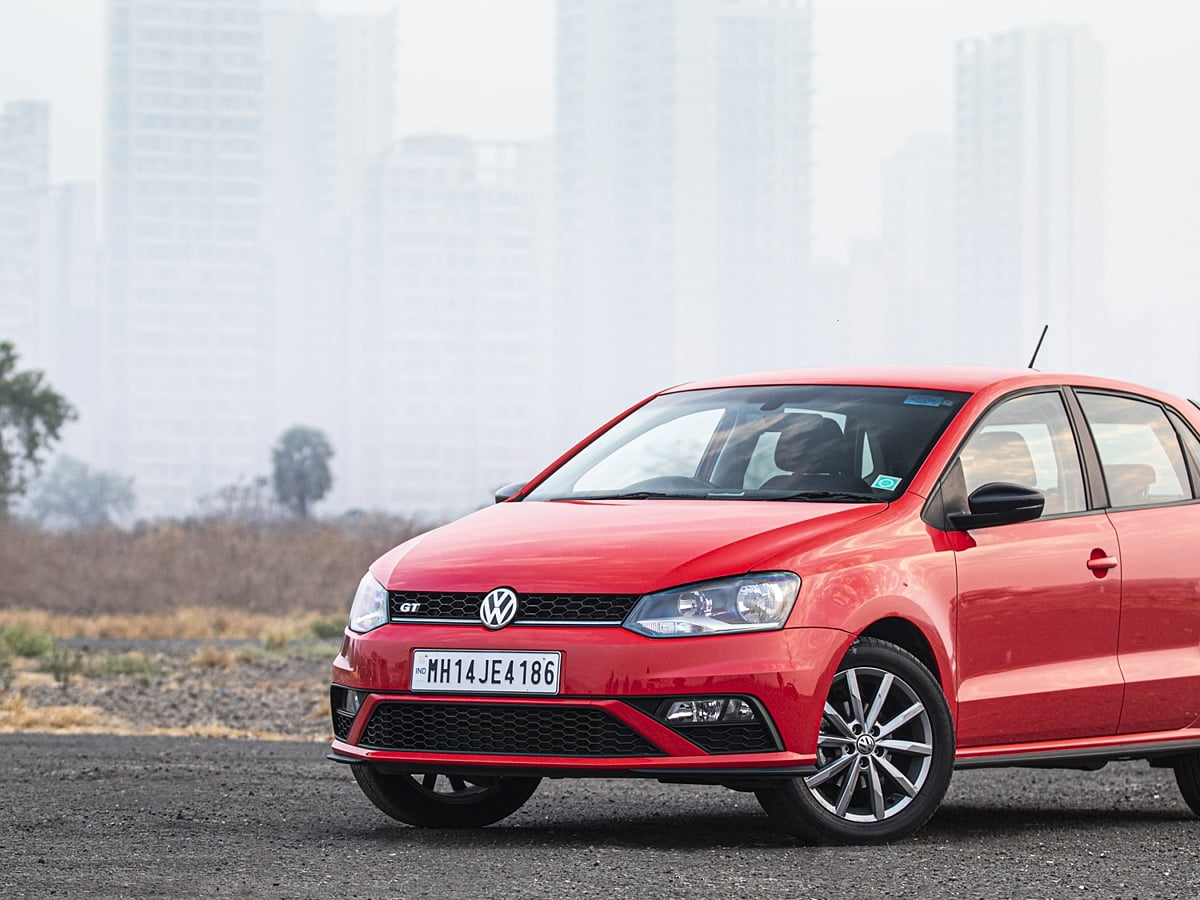
10. Volkswagen Polo GT TSI
The Volkswagen Polo is a comprehensive package that provides German perfection in features, performance, efficiency, and safety as the German automaker’s premium hatchback. Its small shape conceals unrivalled performance and comfort that few rivals can match.
Volkswagen Polo Features:
- Cruise control
- Touch infotainment
- Climate control
- Rear AC Vents
- Rain Sensing Wipers
- Automatic AC
The Volkswagen Polo GT TSI is powered by a 1.0-litre TSI petrol engine. The turbo engine is paired with a 6-speed Torque Convertor automatic transmission that gets 16.47 kilometres per litre. The combination of a performance-oriented engine and a torque converter transmission is suitable for those who enjoy driving energetically. It is available at Rs.6.16 to 9.99 lakhs if you think it’s a good fit for you (Ex-Showroom).
Edited and published by Ashlyn Joy


